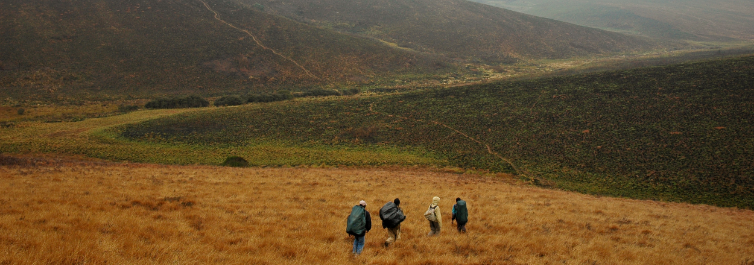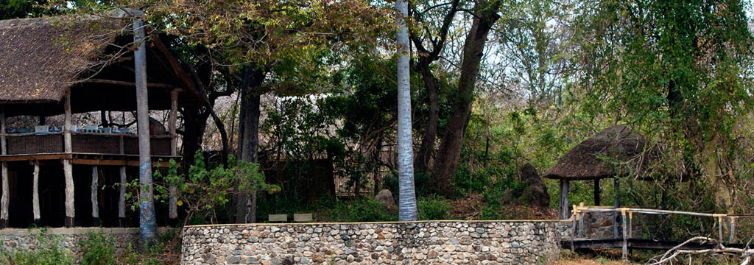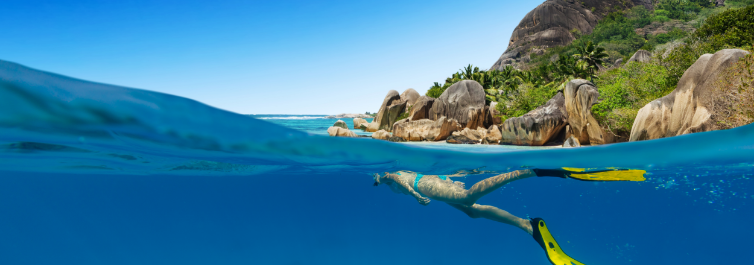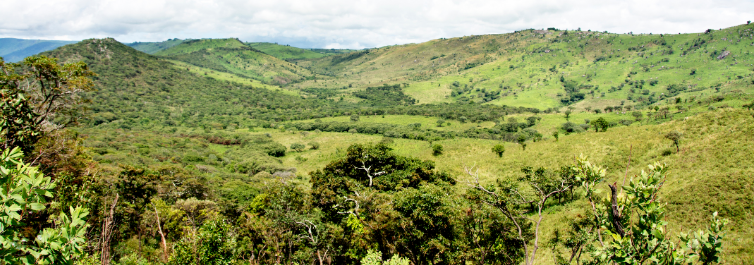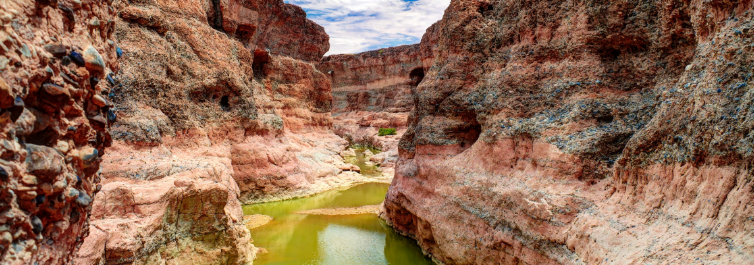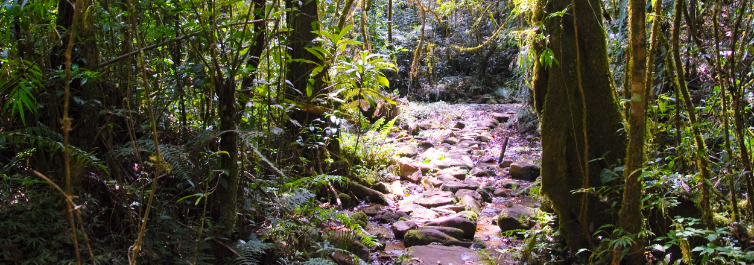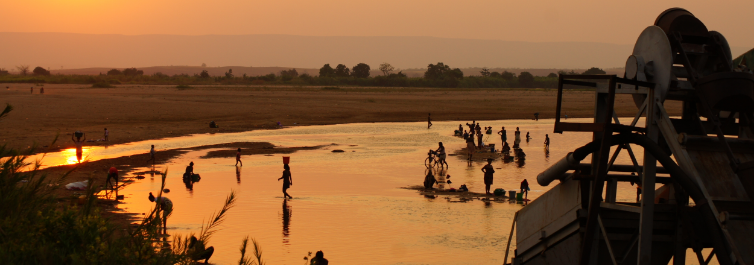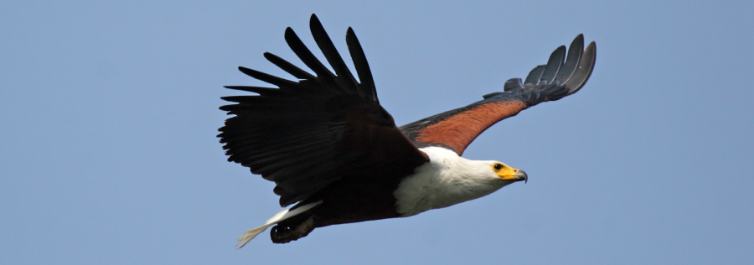Category: Blog
If you are thinking of planning a safari to visit one of the best national parks in Africa, then Liwonde is the perfect destination for you. It is interesting to note that this park provides one of the densest wildlife concentrations in Africa. By visiting Liwonde, you will have an opportunity to view animals such as elephants, cheetahs, hyenas, antelopes, birds, lions, etc. There are plenty of activities to engage yourself in when you visit Liwonde park.
Here are 8 interesting facts about Liwonde National Park in Malawi:

You can be assured of experiencing the widest range of wildlife when you visit Liwonde national park. Of great importance is the fact that this park host about a population of 900 elephants. In addition to the large elephant population, you will have an opportunity to experience other games such as the bushbuck, impala, waterbuck, sable antelope, zebras, and hippos.
You must be wondering what happens to bird enthusiasts. There is no doubt that in Liwonde, the birders experience a safe haven because there are plenty of bird species, about 300, to watch. You will come across birds like the grounded hornbills among other rear species.

If you visit this park, always prepare a camera to ensure you capture every moment. You will be moved by the excellent display of beautiful scenery all around the park, across the year. The vegetation hardly dries up because there is a river cutting across the whole park. At the banks of the river, you will notice there are the infamous Liwonde palm trees which draw shadows in the evening as the sunsets. Such shadows often attract some of the most fascinating birds such as the palm-nut vultures and the fish eagles.

In addition to the beautiful flora and extensive fauna in the park, there are plenty of activities you can engage in. One of those activities is a boat safari along the Shire River, which enables you to get closer to both crocs and hippos. Also, boating enables you to view various birds found in the bushes around the river banks. This activity gives you a satisfactory experience that will always make you keep going back to Liwonde.

Perhaps you are the kind of person who loves exploring various attractions while walking on foot. At Liwonde national park, there are many professional tour guards who will help you walk around while ensuring your safety. You will have to walk through the bushes and get closer to nature than ever before. By so doing, you will be able to appreciate the aspects of both flora and fauna and recognize their contributions to the ecosystem.

Supposing you do not like walking on foot or traveling by road, then you can always enjoy helicopter rides which charge fair prices per person (About $200). This activity will offer you an opportunity to view animals from above. Additionally, you will be able to learn about the park’s history and the efforts that have been made by African Parks in ensuring the safety of animals and the people living around the parks. This means you will be having fun while learning.

Liwonde national park is the best destination for you if you are planning to enjoy a top-notch safari away from the masses or huge crowds. You will realize that within the park, there are only three lodges which include Kuthengo camp, Mvuu camp, and Mvuu lodge. This implies that you will be able to get closer to the animals without the company of many other safari vehicles. Such uncongested movement is advantageous because you will have enough time to capture safari moments without any kind of destruction.

Unlike other parks where you have limited time across the year to visit, Liwonde offers you a chance to visit during three different seasons. That said, you should note that the best time to visit is during the dry seasons when the bushes are dry and open. The dry season falls in the middle of April and October. The three distinct seasons to visit include November to March, April to August, and September to October. It, therefore, means that you can plan a visit to the park without much time strain.

Although Liwonde is considered one of the most densely populated parks, and it offers you an incomparable game-viewing experience, you will be surprised to realize that pricing is extremely fair. Ranging from lodges, meals, and activity fees, all the costs are pocket-friendly. By implication, you will be receiving a breathtaking experience while having no regrets about the payments made. For instance, the entrance fee is set at $20 for adults and $10 for children. What a considerate price tag for you!
Hope you liked the content – 8 Interesting Facts about Liwonde National Park in Malawi by Safarihub experts.
Browse Safarihub Packages – https://safarihub.com/malawi/
Here are the 8 main reasons to go for Malawi safari:
Despite Malawi is a small country when evaluated in relation to African standards, it has continued to offer considerable appeal to those who go visiting for holidays. It is one of the countries considered to be an unspoiled part of the world. Some of the features making Malawi well known include the extraordinary fresh Lake Malawi and its clear waters, the tranquil islands providing breathtaking laid-back beach holidays, and its friendly people. These are just but few reasons why you should visit Malawi.

Within the southern hemisphere, this remains to be one of the most beautiful and impressive lakes. It is much interesting if you understand that it is actually the third largest lake in entire Africa. If you experience the sandy beaches around this lake, together with its abundant palm trees, you may mistakenly think you are on a sub-tropical island. While here, you will have an opportunity to see local fishermen using the traditional fishing methods to catch fish that is readily available in the lake.

If you are a diving and snorkeling enthusiast, then Malawi is the best freshwater destinations to visit in Africa. You should note that even when you are a first-timer in both diving and snorkeling, Lake Malawi remains one of the spots from where you can easily do your learning. The water visibility is often excellent while the temperatures remain warm most times of the year. Even more advantageous, you don’t always have to go out on a boat to reach the nearest coral reefs.

It is true that Malawi may not be one of the top game-viewing destinations in Africa. Nonetheless, it has a few outstanding game reserves such as Majete and Liwondo. Such reserves offer the best sightings of water-adapted antelopes, crocodiles, hippo, and elephants. It is often very easy to access these reserves because they are efficiently connected to good roads.

If you are looking for a country where you can easily connect the beaches and the bushes, then Malawi is your perfect destination. For instance, you will realize that Liwondo National Park is located about a 3 hours’ drive away from the southern lodges along Lake Malawi. Better still there are daily flights departing from South Luangwa and landing into Lilongwe, before being connected to Lake Malawi. This implies that you can be on a South Luangwa safari in the morning and shift to the beach at Lake Malawi in the afternoon. That is an excellent combination.

The Nyika plateau stands as the largest National Park in Malawi. It offers the most stunning plains games to view. When in this plateau, you will experience bush pigs, eland, roan antelopes, and zebras. Additionally, you may see several bird species out of the 400 available, and over 200 species of orchids. Mountain biking in the bush is surely one of the most fulfilling experiences.

It is true that many African countries serve as bird-watching paradises. However, Malawi might be the leading country, with its wide range of habitats from the Afro-montane highlands, forests, lakes, to wetlands that support a considerable variety of birds. Malawi has about 650 astonishing species of birds that are difficult to see from anywhere in the world. Such species include Rufous-bellied Heron, Osprey, African Barred Owlets, and White-backed Night Heron.

The people of Malawi are highly friendly, making you feel absolutely welcome during your safari. It is for this kindness that Malawi has continuously been referred to as the “warm heart of Africa.” You will therefore feel completely at ease while in Malawi.

For hiking lovers, Malawi provides you with several hiking opportunities. For instance, within the Zomba Plateau rising to a height of about 1800m, you may enjoy relaxed hikes across the lush forested areas. Meanwhile, you will be enjoying the great view of birds. Additionally, you may visit Mount Mulanje from where you will enjoy hiking and explore different peaks and streams.
Hope you liked the content – Top 8 reasons to go for Malawi safari by Safarihub experts.
Browse Safarihub Packages – https://safarihub.com/malawi/
Here are the 7 things you should know about the Sossusvlei safari, Namibia:
Sossusvlei sand dunes provide one of the most fascinating sights in the world. Experiencing the curving, clean-lined slopes which rise at remarkably 300m above the ground gives you a much fulfilling experience. Sossusvlei is located right at the center of Namib Naukluft National Park, with its dunes surrounding many dry pans which fill up on rare occasions when it rains. If you are looking for a place where you can take photographs of sand dune perfections, then you should plan your safari to Sossusvlei.

This is an isolated desert outpost that serves as the gateway to Sossusvlei. To reach here, you will have to drive through lonely long roads crossing wide empty land. The settlement found in this outpost revolves around two main functionalities which include the park office for Namib-Naukluft National Park and the petrol station.
You will have to pay your parking fees at the park office then obtain your entry permit. It is essential to note that accommodation within this outpost is limited, but you may find few choices scattered miles away. These accommodation facilities offer a great view of the Sossusvlei dunes, rising like ramparts to the southwest of Sesriem.

Perhaps what really attracted you to Sossusvlei were some images of charcoal-black skeleton trees standing on wide sheets of sand and signaling life dwarfed by the golden mountains. If that is the case, then your perfect destination is Deadvlei. These images have always been used to define the sand dunes in Namibia.
When you visit Deadvlei at midday, you will experience an apocalyptic scene. It is within this place that you can see the Big Daddy Dune, which is the highest of all Sossusvlei dunes. Watch out for the posted 4WD car park because that is where the sandy track to Deadvlei begins. If you are having a 2WD, remember you cannot drive it past the 4WD car park.

This is one of the most fascinating compliments to the moving sands and the wide horizons of the dunes found elsewhere in Sossusvlei. It is located by the roadside from Sesriem to Sossusvlei. This Canyon is a unique place in Namib. It has a labyrinth of trails, secluded water pools, and strange rock structures.
The feeling you may receive from experiencing this Canyon can either be claustrophobic or one of great intimacy. If you are wondering how this Canyon is formed, visit this place and you will realize the formation is through the merging of gravel and sand, and intensive solidification over the past millions of years. You will feel the permanence of air here, what can only be described as “a feeling that is impossible out amid the shifting sands.”

This is the major sand dune experiencing a destination in Namibia. Early in the morning and late at dusk, long queues form at the gate. To reach the location of the exact dunes, you will use the road following the path of the dry Tsauchab River. Far towards the northeastern side of the river valley, you will see Elim Dune. This is the best place you should mark for watching the dunes later in the evening because it is nearer to the gate.

Ranging from July to November, desert temperatures are at their mildest. This marks the high season for visit at Sossusvlei, and if you plan a safari at such a time, expect the highest accommodation costs. Additionally, it is during this time that you will meet the highest crowds here. From May to June, temperatures will have begun to cool, and several lodges will be charging cheaper accommodation costs. However, for the remaining times of the year, the temperatures will be soaring thus limiting the amount of time you can spend in the dunes.

The entry gate to Sossusvlei located at Sesriem opens during sunrise and closes late after sunset. If you want a smooth safari that will ensure you get in before the closure time, plan for a stay at either Sossus Dune Lodge or the Sesriem Campsite found right within the park boundaries. These camps provide you with the best opportunities to catch both morning and afternoon light.
It is critical for you to note that driving into and out of the park before dawn and after dusk is not allowed. Thus, by sleeping inside the park, you will be avoiding the queues at the gate. During high seasons, there may be many vehicles in the back, making the place less comfortable. That said, if you will not be staying in the park, ensure you came back to the gate before sunset.

Visiting the Sossusvlei can be done in different ways. However, you are advised to drive to your furthest destination which is the 4WD post. Be as fast as possible to ensure that you have the most improved chances of enjoying good photographic light in places such as Deadvlei. To ensure you don’t come back late at the gate, late in the afternoons be within striking distance especially in places such as Elim Dunes hours before sunset. This ensures you don’t waste much of the good photographic light driving back to the gate from far into the pan.
Hope you liked the content – 7 Things You Should Know About Sossusvlei Safari, Namibia by Safarihub experts.
Browse Safarihub Packages – https://safarihub.com/namibia/
Madagascar has been described as the world’s eighth continent with great geographical isolation. As a result of this geographical isolation, Madagascar serves as a home to some of the world’s most peculiar fauna and flora. If you want to exhaustively enjoy nature and experience unique flora and fauna, then you should think about planning a safari to Madagascar.
Here is a list of 10 reasons why you should go for Madagascar safari.

When you probably think about Madagascar attractions, the first thing that will come to your mind is the Lemurs. Madagascar Island has about 103 different species of lemurs ranging from the largest, Indri Indri, to the smallest and the tiny mouse lemurs capable of nestling in an egg cup. Literally, Lemurs are the primitive indigenous primates for monkeys.
Due to the separation of Africa, lemurs ended up being marooned within the remote island of Madagascar. You will note that on the mainland, Monkeys are more sharp-eyed, dexterous, and faster than lemurs, implying that it is the absence of monkeys in Madagascar Island that has led to the natural dominance of lemurs. You will be moved by lemurs’ wonderful ability to climb trees and their excellent jumping agility all through your safari.

It is no surprise that lemurs alone are not the only unique animals in Madagascar. There are several other animals enhancing the wildlife peculiarity on this Island. In other words, Madagascar is full of endemic species that are found naturally nowhere in the world. Thinking about visiting this Island, you should not that it has about 70% of the world’s chameleon species.
Additionally, about 240 of the reptile species found here are endemic, with more than 150 frog species. Some of the most common reptiles you will experience include colored chameleons like the Person’s chameleon, which is considered the largest of its kind. Your safari will be made more enjoyable when you see animals such as Aye Aye, Fossa, and Tenrecs.

Unlike many of the tropical islands where intensive tourism has led to the degradation of coral reefs, Madagascar has remained one of the undiscovered tourism destinations and its coral reefs are intact. For diving and snorkeling enthusiasts, Madagascar will offer you the best experience and opportunities particularly when you visit the smaller islands off Nosy Be.
By moving to the north of Nosy Be, you will reach the Radama or Mitsio archipelagos which offers the best diving experience in Madagascar. Most often, you will yacht the boat to reach some of the best diving sites. From the dive boats, you may also have an opportunity to see humpback whales.

You may be surprised about this aspect, but if you are someone who loves enjoying nature by walking on foot, then Madagascar becomes one of the best destinations for you. The terrain of Madagascar and the nature of the rainforest demands that while tracing animals such as the lemurs, one has to walk on foot. Generally, the terrain of Madagascar is steep and composed of several rivers, making it difficult to construct roads in parks.

Madagascar had a position in the African-Asian trade route during the 15th to 17th century. Resultantly, this position has greatly impacted its people’s nature. You will note that the people of Madagascar show a dynamic mix of Indians, Arabs, and Africans who share a warm and friendly disposition.
By visiting Madagascar, you will have a chance to enjoy the natural interactions with the locals. You will be moved by the several different ethnic groups found on this Island, all of which are governed by different traditions and superstitions especially in relation to respect for ancestors, burials, and death.

You will not be attracted much by a fact that there are several bird species in Madagascar if you are a birder, but by considering that nearly half of the 300 bird species are endemic. This fact places Madagascar as one of the best of Africa’s birding destinations. The most interesting birds you will experience include velvet asity, crested coua, and the giant coua.
Additionally, you will see some of the most celebrated endemic species such as mesites and vangas. If you want to fully experience these birds, you should spend much of your time in three specific destinations which include Ranomafana, Dry southern spiny forest near Mandrare and, Andasibe-Mantadia National Park.

Madagascar, when compared to its smaller neighbors such as Seychelles and Mauritius, you will realize that it has much scenic diversity. This is an aspect enhanced by Madagascar’s length since it is about 200km from top to bottom. It is therefore no surprise that it has a breath-taking wealth of natural beauty ranging from wetlands, escarpments, eastern rainforest, to the spiny forests composed of massive baobab trees.

If you are looking for the most undiscovered secrets of the Indian Ocean, then you should visit Madagascar’s beaches. You can either go to the southern beaches located near Fort Dauphine, the Northern beaches of Ile Sainte Marie, or the Nosy Be. While on these beaches you will experience the best seafood meals, enjoy snorkeling and diving, and see the un-spoilt palm-lined beaches.

Like the case of endemic fauna, Madagascar has plenty of endemic flora, totaling about 13,000 species. Of great interest is that you will experience the 6 out of the 8 endemic baobab species. Additionally, of the 1000 species of orchids, 75% found in Madagascar are endemic. The adaptation of orchids is intensive, and they are found even in the dry spiny forests of the south.

Starting from mid-June through to October, you are likely to see the Humpback whales on the Madagascar coast. The experience of watching whales is full of fun and can be enjoyed all the way from the eastern coasts of South Africa through to Madagascar. Through whale trips offered by specialists such as Princess Bora Lodge, you will enjoy watching whales in Madagascar.
Hope you liked the content – 10 Incredible Facts about Hyenas by Safarihub experts.
Browse Safarihub Holidays Packages – https://safarihub.com/madagascar/
Are you thinking about going on a trip from where you can experience the best out of your money? If that be the case, then a safari to South Africa is well deserved. In any given safari, you would want to enjoy a vast experience of culture, wildlife, and beach life. All these experiences are found in South Africa and your safari will never be a disappointment.
Here are the 8 reasons why you should travel to South Africa:

You should note that Cape town has the best beaches in the world insofar. These beaches range from fashionable Camps Bay located near the city center to Boulders Beach which is fully occupied with African penguins waddling about. As you go further north along South Africa’s Garden Route, you will realize that the temperatures of the Kwazulu-Natal’s Ocean have become warmer and warmer, making you enjoy your stay to the fullest. Additionally, you will be able to discover excellent snorkeling and diving spots and various tropical coral reefs.

If you want to be sure of seeing all the big five (leopards, lions, rhinos, buffalos, and elephants) in a single day, then South Africa is the right destination to visit. This is surely one of the best reasons why you should visit South Africa. You should note that South Africa is one of the leading tourism destinations in the world from where you can experience wild animals, thanks to its excellent conservation areas and national parks like Phinda game reserve, Madikwe game reserve, Pilanesberg National Park, Addo Elephant National Park, and Kruger National Park.

For the food enthusiast, visiting South Africa shall be great fun. You will enjoy fantastic meals at affordable prices, implying you will have value for your money. When you go visiting Cape Town, it is advisable that you spend much of your time at Cape Winelands. You will realize that this is South Africa’s undisputed gourmet capital. Although Cape Town is considered the oldest foodie destination in South Africa, Johannesburg is observed to be growing at a high rate. Both the towns offer great hubs for inspiring restaurants, great coffee, and craft beer.

In South Africa, there is plenty of sunshine, rivers, and seas, mountains, etc. Resultantly, South Africans treat their country as an undisputable playground. There are plenty of outdoor activities such as hiking to the top of Table Mountain, riding horses in the Drakensberg, watching whales in Hermanus, and discovering the culture of South Africa’s urban centers. Nevertheless, you can also take a walking safari to Kruger National Park and cycle through the Cape Winelands. In other words, while in South Africa, there are plenty of activities you can engage in to ensure that your day is full of experiences.

Have you ever known that the beaches of KwaZulu-Natal Coast, Ballito, and Durban experience an average of above three hundred days of sunshine in a year? It is true that even the rainy season observed in Kruger between December and March is often full of sunny days. Arguably, South Africa is the best destination with its generally temperate climate. By implication, this country is full of mild winters and sensational summers. If you want to have a memorable safari, then it must be made up of enjoyable weather, which is guaranteed in South Africa.

The far back you would like to go when you visit South Africa depends on you. It is interesting to note that there is a fossil cradle of humankind dated 2.3 million years back. You can also enjoy recent history by visiting KwaZulu-Natal Battlefields. The modern history in South Africa can also be observed by visiting Robben Island where Nelson Mandela, alongside other political prisoners, was incarcerated for 18 years.

In South Africa, you will run across many lodges providing an extra bit of holiday pampering. Additionally, these guesthouses provide value for money. You will enjoy your safari in general because eating in South Africa is affordable.

You should note that South Africa facilitates a steady flow of international airlines within its international airports spread all over the country. Once in South Africa, you will find several national highway roads leading to your preferred destinations. You can have a self-drive holiday in South Africa, which is one of the only two countries in Africa where such is possible. In addition to the roads and airlines, the accessibility of Wi-Fi is high, and the phone network is outstanding.
Hope you liked the content – 8 Reasons to Go for A South Africa Safari by Safarihub experts.
Browse Safarihub Packages – https://safarihub.com/
Which is the Best Time to go on a Safari in Kenya?:
Kenya is one of the countries in Africa with a wide range of regions to visit. For instance, you may visit destinations such as the southern, northern, central, eastern, and western regions. Of great interest is for you to note that not all these regions receive the same temperatures and rainfall distribution across the year. It is therefore essential for you to understand the best time at which you can visit Kenya, based on the destination you have opted for.
Here is the best time to go on a safari in Kenya, based on your region of destination.
Book Now – https://safarihub.com/

Under the southern destination, you will be able to visit places like the Masai Mara National Reserve, Amboseli National Park, Chyulu Hills National Park, Tsavo East National Park, Tsavo West National Park, and Shimba Hills National Reserve. Looking at Masai Mara, you will realize that it provides an ideal climate as well as outstanding year-round game viewing. While in this national park, you will establish that the nights are often much cooler while the daytime temperatures tend to remain very comfortable.
The best time to visit Masai Mara is during the cool-dry seasons from July to October. During this time, you will experience the great wildebeest migration arriving in Masai Mara from the Serengeti National Park. Nonetheless, you should note that this is often the most expensive season to have a safari in this game park.
For the Amboseli National Park, the preferred visit time is during Easter school break New years and the Christmas season. Generally, it is recommended that you visit the Amboseli game park during the dry seasons because it will be easier to locate wildlife since the vegetation will not be as thick. Besides, there will be a considerable decline in the pasture that will bring the animals together near the remaining few water sources. Another advantage of visiting this game park during the dry seasons is that insects such as mosquitos will be fewer, and the days are often gorgeous with bright blue and clear skies.
In the Chyulu National Park and the other destinations in the southern part of Kenya, it is advisable that you visit during the dry seasons which often range from the months of July to October. Nevertheless, you should also visit these destinations during the month of December for Christmas to the month of March, which often incur short rains.

The central region is found within the unique African highlands. The temperatures here are therefore exceptional at any time of the year. Averagely, the day temperatures range from about 20 degrees Celsius in the months of July and August, and 27 degrees Celsius in the months of January and February. In these regions, the long dry seasons are found within the months of July to October. By implication, these are the ideal periods within which you can visit the central destinations in Kenya.
However, you should note that the central region is found within high altitudes, and therefore, during the dry seasons, you may experience showers. Most African tourist specialists always recommend that you visit the central Kenya destinations during the long rainy seasons since the birdlife will be plentiful, the forests will be renewed and wildly lush and most wildlife give birth during such times. You will therefore be able to establish the nature of bonding between the mother and the baby for each animal species, thus making your safari as memorable as possible.

The regions you are likely to visit in the Eastern Destination include Meru National Park, Mombasa, Malindi, Watamu, Lamu, and Kilifi. You will realize that these regions have two rainy seasons in a year, the longest of which is in April and May, with the dusting off period being in June. After such long rainy periods, there is a long dry season found between the months of July to October. During such dry seasons, it is the best time to visit the eastern destinations because the sky will be having few if any, clouds, and the sunshine will be in abundance. From the months of November until the end of December, these regions experience short rains before the commencement of short-hot dry seasons.

The northern destinations include regions such as Lake Bogoria, Lake Baringo, Northern Frontier, Buffalo Springs National Reserve, Shaba National Reserve, and Laikipia. Like in the case with the other destinations, the northern regions experience two dry seasons and two rainy seasons which influence the tourism activities. From July to October, the prevailing conditions entail the long-dry seasons. On the other hand, during January and February, you will experience the short, hot-dry seasons.
It is during the dry seasons that the food and water supply become limited, making animals gather near the last remaining sources. If you are a bird lover, then you should visit most of these northern destinations, such as Laikipia, from the months of October to April when migratory species arrive from as far as Russia and Europe. Also, during the dry seasons, it is easier to navigate through the roads found in these regions unlike during the rainy seasons when the roads are extremely muddy.

Most of the western destinations fall within the tropical rainforest regions and therefore, they have warm climatic conditions, which enables them to be visited at any time during the year. You should note that within these regions, temperature fluctuation is limited, and the prevailing day temperatures remain constant at about 30 degrees Celsius from the months of September up to January. The night temperatures are at an average of 12 degrees Celsius through the months from August to February. The dry months in these regions are experienced during the months of January, February, August, and September. These are the best months to visit the western destinations.
Hope you liked the content – Which is the Best Time to go on a Safari in Kenya by Safarihub experts.
Browse Safarihub Packages – https://safarihub.com/safaris/
Here are the 8 Interesting Facts About Flamingos:
With their pink-colored feathers and famously known long necks, flamingos are considered one of the most fascinating species of birds. You might be wondering how they obtain their pink-colored feathers and why they remain to be very flexible birds, especially in the necks.
Here is a list of 8 interesting facts about flamingos:

Naturally, it may be difficult to distinguish between these flamingo species. However, it is interesting to note that there are six species which include American flamingo, James’s flamingo, Andean flamingo, Chilean flamingo, lesser flamingo, and the greater flamingo. These names originate from either the flamingo’s global positioning or their look.

This is a very interesting phenomenon. For other birds, it is common to stand on one leg but in the case of flamingos, it is a must. Because flamingos live in wetlands, they often lose heat through their feet. To keep warm, they stand on one leg and keep the other leg close to their bodies as a way of minimizing heat loss and conserving energy.

Within the neck of a flamingo, there are a total of 19 vertebrae which enables the birds to move their necks that much. By implication, these vertebrae create the flexibility needed by the flamingos for survival. Great flexibility in the neck implies that flamingos can reach down into the water for food and reach far back to clean their feathers.

The Andean, James, and lesser have beaks referred to as the deep-keeled bill. The shape of their beaks only allows them to feed on algae. On the other hand, American, Chilean, and greater flamingos have shallow-keeled bills which allow them to supplement their diet with insects, invertebrates, and small fish.

The sexual maturity age for a flamingo is attained anywhere between the ages of 3-6 years. Once mature, the birds only met once a year and lay one egg. They use feathers, stones, and mud in building their nests. The egg weighs between 115-140 grams and takes about 27-31 days to hatch. On rare occasions, flamingos may lay two eggs. However, it becomes unlikely that both the eggs will hatch.

You will observe that mostly flamingos stay in groups and tend to enjoy the company of each other. They protect each other. When they are feeding, often their heads are emersed deep into the Waters and predators may find it easy to attack. As such, when they are in groups, they become more protected.

The design of flamingos’ bodies demands that they feed with their heads upside-down. For these birds, such feeding is facilitated by the filters in their beak and the fact that they are naturally filter-feeders. They start by stirring the water with their feet to disturb larvae, shrimps, and algae. They then immerse their heads into the water and slurp a mouthful of food.

The Bahamas set its trust in 1959 and deployed guards to protect its flamingo species in the nature reserves. Predominantly the Caribbean flamingo is found in the Bahamas
Hope you liked the content – 8 Interesting Facts About Flamingos by Safarihub experts.
Browse Safarihub Packages – https://safarihub.com/
Here are the 7 Best Places to See Rhinos in Africa:
Are you wondering about some of the best places from where you can see these prehistoric creatures? In the past, rhinoceros were found almost in the entire African region. However, due to poaching these animals have become extinct. The remaining few species need maximum protection and are therefore located in specific areas.
Here are the top 7 places from where you can see rhinos in Africa:

This is the number one national park in South Africa. Realistically, it has the largest population of rhinos in the entire African region. Within the southern part of Kruger National Park, you will experience particularly the white rhino. By good luck, you will be able to spot the smaller black rhino that often roams unobtrusively within the dense thickets.

If you are thinking of going to Tanzania to see rhinos then Ngorongoro should be in your mind since it is the most reliable place. In this crater, you will have an opportunity to see the rare species of black rhino. They often spend much of their time of the day in the open grasslands and therefore you can easily spot them. There are chances that you may miss the rhinos in the plain. Supposing such happens, then you should try your luck later in the afternoon by visiting the picturesque Lerai Forest. This is where the rhinos retreat too late in the evening before night falls.

This is the home to rhinos found in Uganda. It is very interesting to visit this sanctuary because you will have the opportunity to track the white rhinos on foot with the help of an experienced guard. Your safety is therefore guaranteed. Never forget to take photos or to breathe. You can overwhelmingly be moved on seeing these 2-tone animals and your adrenaline may pump too fast.

When you visit the Kenyan rift valley you will be enthralled with the scenic beauty provided by Lake Nakuru, its escarpment, and the surrounding yellow fever trees. It is one of the best settings from where you can see the white rhinos and your chances are guaranteed even on a one-night safari. If you need to take atmospheric pictures you will have to wake up early in the morning to find the rhinos grazing on the lakeshore in the rising mist. Also, in this game park, there are chances of seeing black rhinos, although the chances are either a miss or a hit.

You must have heard about Namibia and its desert conditions. Although on several occasions the black rhinos live in thick vegetation, they are found in Namibia within the Etosha Pan. It is a common thing to sight the black rhinos while in Etosha national park. During the dry season, Etosha is widely recognized for providing outstanding wildlife viewing at waterholes. If you visit the flood-lit Okaukuejo waterhole at night you may have an opportunity of witnessing black rhinos as they come to drink water.

Hluhluwe-Imfolozi Game Reserve is the oldest of all the game reserves in South Africa. It was set up in the 1890s to serve as a sanctuary to the then remaining species of the white rhino. In other words, this is where rhino conservation began and where they were saved from total extinction. When you visit this reserve, you will experience both white and black rhino species although chances of seeing the latter are minimal.

This is a conservancy located in the Laikipia plateau just below Mount Kenya. It offers you an opportunity to see both the southern white rhinos originating from south Africa the endangered black species. Visiting this reserve is particularly interesting because it serves as the home to the only remaining species of the northern white rhinos in Africa.
Hope you liked the content – 7 Best Places to See Rhinos in Africa by Safarihub experts.
Browse Safarihub Packages – https://safarihub.com/
Here are the 8 Amazing Facts About the African Rock Python:
It is essential to learn some of the incredible facts about the African rock python. This is the largest snake in Africa. When you are planning to conduct a safari to see this snake, you should note that you have to be careful about it. Matter of interest in relation to this snake may range from its size, habitat, diet, lifespan, threats, etc. For you to conduct a safe safari to experience the African rock python, grab a good safari-grade camera with a zoom lens and a good pair of binoculars.
Here are the 8 incredible facts about the African rock python:

You will notice that there are many snakes in Africa. Some of these snakes belong to the python family. Besides, these snakes can be found on the entire continent. However, for the African rock python, there are two primary species. First is the Python sebae (African rock python) which is predominantly found in West and Central Africa, especially in countries such as Uganda, Ethiopia, and Senegal. The second species is the Python Catalans (Southern Africa python) which is common in the southern part of Africa, mostly in countries such as South Africa, Zimbabwe, and Kenya.
Book Now – https://safarihub.com/

As with many people, it is thought that African rock pythons live in places around the water bodies like near lakes, rivers, marshes, and swamps. However, you should note that these snakes are unique, and can therefore survive in nearly all sorts of habitats. This aspect differentiates them from other snakes that survive only within limited environments. These pythons are good swimmers and as such, they can stay for long over the water surfaces. Pythons can then ambush their prey like animals when they come to drink water.
Book Now – https://safarihub.com/

By implication, the African rock pythons can not poison their prey. It will be interesting for you to understand that they do not even have fangs. However, this is not a guarantee that you play around with the pythons. They have pointed sharp, needle-like teeth that they always use in biting and immobilizing their prey. Once the prey is bitten and caught, the African rock python wraps around it and constricts slowly until the prey dies.
Book Now – https://safarihub.com/

The nature of aggressiveness shown by these pythons is not as much as that possessed by snakes like a king cobra. These pythons are not as docile. Nonetheless, they have the potentials of striking quickly and unexpectedly, which justifies them as ambush predators. Also, the African rock pythons are solitary and they do not like staying with other snakes of their kind.
Book Now – https://safarihub.com/

Depending on the weather within specific habitats, other snakes often hibernate. On the contrary, the African Rock pythons do not hibernate but undergo dormant seasons. Within this season, the pythons do not mate, nest, hunt, or explore new territories as usual.
Book Now – https://safarihub.com/

Looking at their color, you will observe that they are often a combination of bronze, brown, and grey. Additionally, these pythons have irregular spots ranging from dark green to bright yellow. If you want to know one of the distinctive features of an African rock python, look below their eyes and you will see a set of triangular markings known as the sub-ocular marks. This is a feature that is essential in distinguishing African rock pythons from other snakes of similar sizes.
Book Now – https://safarihub.com/

Averagely, African rock pythons are approximately 10-15 feet in length. Nonetheless, other larger pythons can go up to 20 feet. Unlike in the animal kingdom cases where males are usually larger than females, for African rock pythons, the opposite is true; females are larger in size (anywhere between 1-10 feet) as compared to males.
Book Now – https://safarihub.com/

These snakes have been recorded to live for long, often between 20-30 years. The oldest African rock python put in captivity recorded a lifespan of 27.3 years. However, it is highly advocated that these snakes can live for longer periods when in the wilderness.
Book Now – https://safarihub.com/
Hope you liked the content – 8 Amazing Facts About the African Rock Python by Safarihub experts.
Browse Safarihub Packages – https://safarihub.com/safaris/
Here are the 8 Interesting Facts About the African Fish Eagles:
The African fish eagles serve many functions and are greatly termed as a symbol of Africa. Often, there are about seven species of African fish eagles. They are unique raptors that are observed soaring high across the blue skies. They constantly produce high-pitched yelps that symbolically indicate the continent’s passion and love for songs. Additionally, images of African fish eagles have been used to represent and sum up the wilderness, above rivers that meander across plains dominated by wild animals such as antelopes and elephants.
Here are the 8 interesting facts about the African fish eagles.

The countries where the fish eagle has been used as a symbol in their national flag represents areas where the eagles are often found in abundance. These countries include South Sudan, Zimbabwe, Namibia, and Zambia. The fish eagles are valued in these countries to the extent of featuring them on the coats of arms. This makes the African fish eagle an interesting bird species. The picture below represents a Zimbabwean flag, with the African fish eagle symbolizing freedom and hope.
Book Now – https://safarihub.com/

Essentially, you should note that a larger population of these eagles is distributed in the southern and eastern parts of Africa. By implication, this large population of fish eagles makes them one of the most predominant predatory birds found in Africa. According to IUCN, the African fish eagles are classified as animals of the least concern.
Book Now – https://safarihub.com/

Looking at the birds’ genera, Fish Eagles are classified under the group of Haliaeetus genus of the sea eagles, which is considered as the most ancient bird genera. In other words, the fish eagles have been in existence long before man and other primates.
Book Now – https://safarihub.com/

Although the fish eagles have the potentials to scavenge like the best of all birds, they often steal food from other bird species. The most common birds from which they steal food are the saddle-billed storks and the Goliath herons. Literally, the fish eagles can taker food away from any of the birds in existence.
Book Now – https://safarihub.com/

The African fish eagles do not depend solely on fish for food. They also don’t feed purely on fish. On the contrary, the fish is supplemented by other meals such as mammals and birds. You will note that the African fish eagles are mind-blowingly efficient hunters that can easily pick on various birds such as waterfowl, ducks, etc.
Book Now – https://safarihub.com/

Despite fish eagles being so aggressive when executing a hunt for prey, they are loyal birds that mate for life. Often, the actual mating amongst these birds occurs when the levels of water are lowest, during the dry seasons. These birds build nests that may stretch to lengths of up to two meters. During the dry seasons, the African fish eagle couples return to the nests they used before and mate for life.
Book Now – https://safarihub.com/

Often, these birds have unique and distinct high-pitched yelps. Such yelps sound resonates across the African Continent and has been termed as the “sound of Africa” by most people. It is interesting to experience the combined yelp between the fish eagles and the hippos. The fish eagle duet with the hippos, and they produce treble while the hippos produce baritone in the orchestra. If you want to hear such a teamed orchestra, then grab a drink later in the afternoon and relax in a safari camp.
Book Now – https://safarihub.com/

For the birds of prey and specifically raptors, such kind of sexual dimorphism is a common phenomenon. For the African fish eagles, the males are often narrower, with their wings growing to a span of up to 6.6 feet or 2m across. On the other hand, the females develop to have wings spanning up to about 8 feet or 2.4m across. The picture below represents a typical female African fish eagle.
Book Now – https://safarihub.com/
Hope you liked the content – 8 Interesting Facts About the African Fish Eagles by Safarihub experts.
Browse Safarihub Packages – https://safarihub.com/safaris/




